MercoPress. South Atlantic News Agency
Tag: Argentine peso
-
Monday, April 25th 2022 - 20:55 UTC
Milei gets 12,000 people to attend class on inflation in Mendoza

Argentine Libertarian Deputy Javier Milei Sunday insisted on dollarizing the country's economy during a rally in Mendoza where he also vowed that such would be his first step if elected President in 2023.
-
Thursday, February 10th 2022 - 21:27 UTC
St Valentine's Day rise in bread to hit beleaguered Argentine families
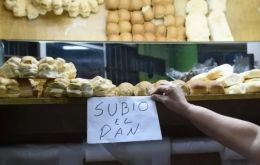
The price of bread in Argentina is to rise between 20% and 25% as of next Monday, Feb. 14 in a very special St Valentine's Day gift both to consumers and to a Government that is struggling to curb inflation and keep the exchange rate of the local peso against the US dollar from skyrocketing.
-
Wednesday, January 5th 2022 - 10:17 UTC
In three decades the Argentine Peso equivalent to one dollar, is now worth less than 5 US cents

Some three decades ago the new Argentine democratically elected government takes office determined to put an end to endemic inflation when not hyperinflation. The new scheme was convertibility, making the Peso equivalent to one US dollar. Following strictly to the book, this meant a tight rein on spending and selling government companies that only accumulated deficits.
-
Thursday, December 30th 2021 - 09:58 UTC
Argentine peso drops yet again versus informal US dollar

The unofficial exchange rate between the Argentine peso and the US dollar climbed just one more notch Wednesday, thus reaching an unprecedented high of AR $ 205 (buy) and AR $ 209 (sale) / US $ 1.
-
Wednesday, December 22nd 2021 - 11:36 UTC
Argentine peso needs devaluing, Goldman Sachs report says
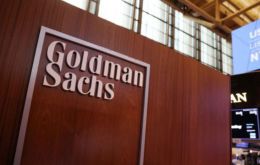
A macroeconomic report from Wall Street operators Goldman Sachs released Tuesday has warned that “without fiscal or monetary anchors” the country is up for strong “headwinds” in 2022 and 2023 and, therefore, “the peso needs to be devalued.”
-
Tuesday, December 8th 2020 - 08:44 UTC
Proposal to have Maradona and his “Hand of God” goal on the 1,000 Peso bill
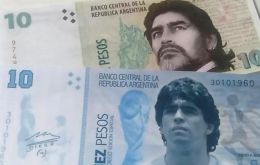
An Argentine senator wants to put Diego Maradona on the country’s banknotes and presented a project to Congress on Monday to get the late soccer star and possibly even his ‘Hand of God’ image on a 1,000-peso note.
-
Saturday, October 24th 2020 - 09:25 UTC
Argentina loves the dollar and has total aversion for its own currency
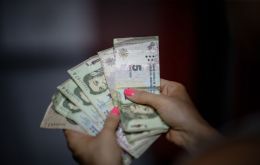
Argentina’s battle to control its currency is upending South America’s second-largest economy, wreaking havoc on everything from household finances to the production and sale of common goods.
-
Monday, September 28th 2020 - 09:31 UTC
It’s time to dump Argentina’s Peso

By Steve H. Hanke – In addition to facing an acute Covid-19 crisis, Argentina's deadbeat economy is collapsing, and, as usual, the inflation noose is around Argentines’ necks. Argentina’s official inflation rate for August 2020 is 40.70% per year. And, for once, Argentina’s official rate is fairly close to the rate that I calculate each day using high-frequency data and purchasing power parity theory, a methodology that has long proved its worth when compared with official statistics. Today, I measure Argentina’s annual inflation rate at 37%, but probably not for long — the noose is generally followed by the trapdoor.
-
Thursday, September 24th 2020 - 09:31 UTC
Argentine currency worthless in Uruguay
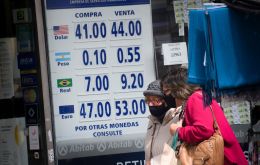
For the second day running the Argentine Peso was virtually worthless in neighboring Uruguay foreign exchange houses. On Tuesday the Argentine Peso was worth zero, and on Wednesday there was a modest ten Uruguayan cents offered for the battered Argentine currency.
-
Thursday, September 17th 2020 - 09:30 UTC
Argentina tightens currency controls, helping the US dollar climb to a new record
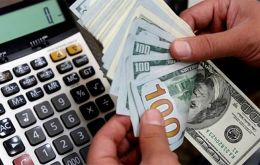
Argentina's peso currency plunged further into record low territory after the central bank tightened currency controls. The peso opened almost 0.1% weaker at 75.25 per U.S. dollar, traders said, and the country risk rose 38 basis points to 1,157. The black market peso or blue dollar plummeted 9.7% to open at a new all-time low 145 per U.S. dollar.
